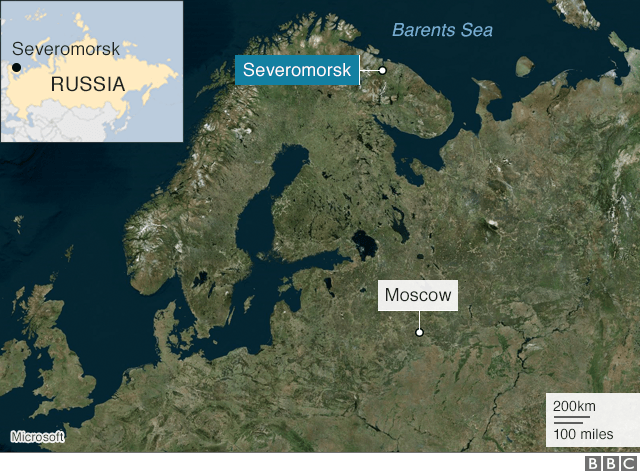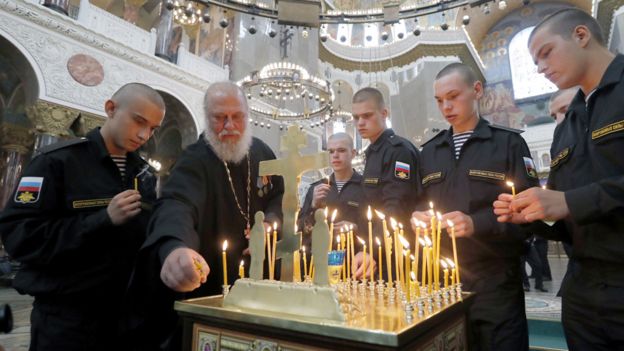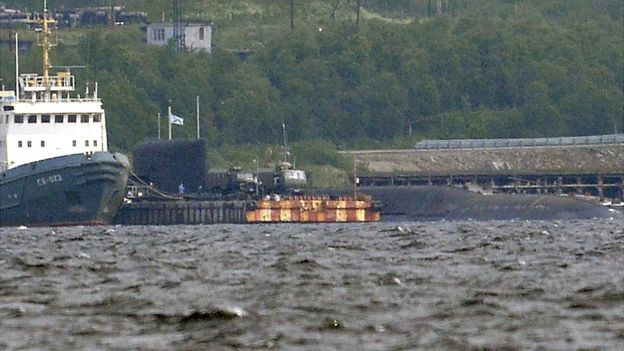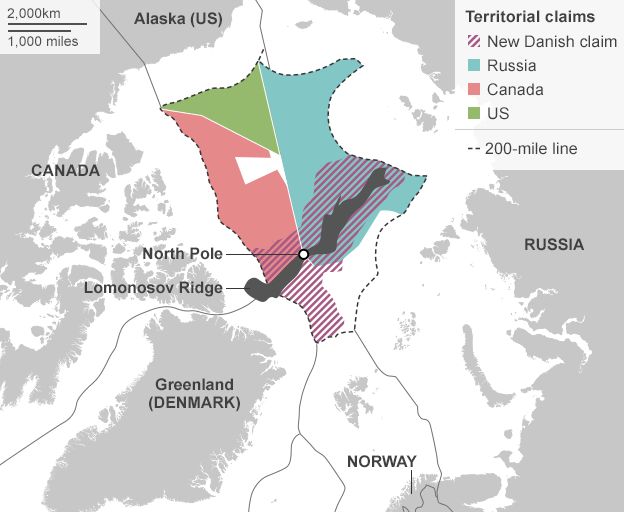Russia says the main cause of the deadly incident on board a submersible which killed 14 crew on Monday was a fire in the battery compartment.
Defence Minister Sergei Shoigu also said the top-secret military craft was nuclear-powered but the reactor had been isolated from the fire.
The 14 senior officers died of smoke inhalation as a result of the fire on the submersible in the Barents Sea. The craft is now at Severomorsk, the main base of Russia’s Northern Fleet.
It has not been named, but it is a deep-sea research vessel, which had been exploring the Arctic seabed, the Russian government daily Rossiiskaya Gazeta says.
It had been descending to extreme depths on difficult missions, the paper reported.
Those missions were not specified, but Russia is in an international race to stake territorial claims in the Arctic, which is believed to be rich in oil and gas and other minerals.
“The main cause has been established – it was a fire in the battery compartment, and then it spread,” Mr Shoigu told President Vladimir Putin in a meeting on 4 July, according to the Kremlin website.
“The nuclear power unit on the vessel has been fully isolated and nobody is in that section. The crew took all the necessary measures to protect the unit, and it is in full working condition. This leads to us to hope that in quite a short time the vessel can be put back into service.”

The fire broke out as the submersible was in Russian territorial waters, the defence ministry says.
High-ranking officers
The ministry has now named all 14 victims, and all were senior officers. Seven were first-rank captains, including two with Hero of Russia awards; three were second-rank captains; two were third-rank captains; one was a captain-lieutenant and one a lieutenant-colonel.
A first-rank captain comes fifth in the Russian naval hierarchy, after four ranks of admiral. After three ranks of captain comes the rank of captain-lieutenant.
They were from a unit based in Peterhof, a district of St Petersburg.
The ministry says several crew members survived and are in hospital, but no figure has been given. A “civilian specialist” was rescued by the crew during the fire.
Severomorsk was also home to the Russian Kursk nuclear submarine, which sank in 2000 killing 118 sailors.
Mr Putin was heavily criticised for the way he handled the Kursk disaster. Media reports at the time showed him enjoying a holiday at a Black Sea villa as families of the victims demanded information about their relatives.
In the latest incident, the Kremlin has also given few details about the vessel, “in the interests of the state and state security”.
 Servicemen in St Petersburg lit candles in memory of the victims
Servicemen in St Petersburg lit candles in memory of the victims
What sort of submersible was it?
Several newspapers, quoting military sources, identified the stricken vessel as an AS-12 – nicknamed “Losharik” – or AS-31 submersible.
These mini-subs can dive up to 6,000m (19,685ft) and are designed to be carried under the belly of a larger submarine. They are operated by the Russian military’s Chief Directorate for Deep Water Research – the GUGI – often referred to as the country’s “underwater intelligence service”.
Quoting military sources, RBK newspaper listed the GUGI’s main tasks as “monitoring foreign underwater communication lines, recovering from deep water interesting weaponry and military equipment and protecting Russia’s own underwater communications cables”.
 The big submarine shown here, next to a tug, is believed to be the mother-ship of the research submersible
The big submarine shown here, next to a tug, is believed to be the mother-ship of the research submersible


Underwater tragedies
Accidents involving underwater vessels are rare. Here are some of the most serious:
- The Argentine navy’s ARA San Juan submarine with 44 crew disappeared during a routine patrol in the South Atlantic in 2017. The wreckage was found a year later
- All 70 crew aboard China’s Great Wall Ming-class submarine suffocated in 2003 when a diesel engine malfunctioned, consuming the vessel’s oxygen supply
- Russia’s Kursk submarine sank in the Barents Sea in 2000 after a torpedo exploded during an exercise, killing all 118 on board, including 23 who survived the blast but died due to a lack of oxygen
- The USS Scorpion sank in the Atlantic in 1968, possibly because a torpedo exploded, killing the 99 crew
- The USS Thresher sank during diving tests in 1963, killing all 129 on board – the biggest submarine death toll in history
Source: BBC


Comments are closed.